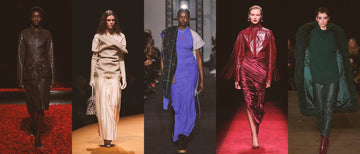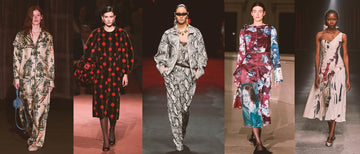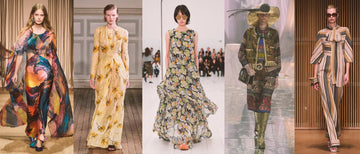History of Tie Dye
Our Innovative tie dye prints will save time and money!
Tie dye, we all know what it is and almost every year it crops up in trends on DIY tutorials and in stores. The tie dye trend is not a trend we will see the end of quickly, as it continuous to grow and stay popular amongst most age groups as a form of expression. There can be so many ways to wear and design tie dye, the most common are the retro psychogenic style with bold rainbow colours and pastel subtle colours. Throughout the latest seasons we have seen lots of tie dye in tonal and monochrome styles in a bleached style which is different, subtle and a different take on the approach. It is loved by us all as a-go-to comfort style that can be unique to you especially when doing it yourself, however not many people know where this trend originated from.
A-go-to comfort style that can be unique to you especially when doing it yourself

The tie dye history is a long one with many believing that the birth of tie dye was during the 1960s Woodstock culture, however, although a legendary steppingstone in the success of tie dye it was not the beginning. The first ever tracing of the tie dye lineage was to the 6th century in China known as ‘’Zha ran’’ or ‘’Jiao xie’’ and Japan cultures which were the ‘’Shibori’’.
During this time, they would use berries and other natural ingredients for dying which are still used today in some cultures as it's seen as a sustainable way to reinvent your wardrobe without the price tag of buying new clothes, however it has been slowly substituted for natural dye packs and bleach which is sustainable along as it doesn’t contain chlorine.

As early as the 6th century tie dye was also making appearances throughout India, the type of tie dye that they were practicing was called a ‘Bandhani’ which was done by tying small areas and dip dying to create a dotted print which bled out into new shapes and commonly done on silks and hemp fabrics as they were softer and created a better canvas. The Bandhani style has been passed into current tie dye methods by tying string onto the fabrics to produce small areas to get shapes and patterns such as swirls and bursts of colours. Traditionally the Bandhani technique was only worn by a selected few due to the uniqueness of the prints and the process taken to make them. The selected few were priests or those who were deemed as noble or royal as this signified their importance and most importantly the value they held.


In western cultures tie dye became a trend in the 1920s, especially as a way of remaking clothing and home décor during the great depression and other times of hardship. It continued to grow in popularity, spiking in the 1960s ‘hippie’ movement of expression to break away from the so-called normal social standards they had been facing. When the stars of that decade such as Janis Joplin got involved in tie dye, the trend spiralled to being one of the largest trends and continued to make an appearance each year with spikes in the 80s and yet again as a huge trend in 2019/2020.
In 2019 tie dye was a key modern insight on the catwalks with brands like Prada, Stella McCartney, and Acne Studios. This is a trend that forever evolves each time it comes around and improves to bring us more style and exciting way to wear it each time.
REFERENCES
AdairGroup, 2020. THE HISTORY OF THE TIE-DYE SHIRT. [Online]
[Accessed 14 01 2021]
Alexander, E., 2019. Tie-Dye is back for 2019 and this is why. [Online]
[Accessed 14 1 2021]
Brooke, E., 2019. A short cultural history of tie-dye. [Online]
[Accessed 14 01 2021]
Fuel4Fashion, 2014. Origins of Fashion: Tie-Dye. [Online]
[Accessed 1 2021]
Hardy, A., 2019. Janis Joplins Woodstock Outfit was a lesson in tie dye and individuality. [Online]
[Accessed 15 01 2021]
[Accessed 14 01 2021]
 |
Amy Davidson |
| Amy Davidson is a newly graduated textiles designer from Scotland, who loves to travel, the colour orange and hairbands in as many colours and prints as she could possibly get her hands on. Her favourite style of print to work with is anything that’s bold, colourful, and tropical! |






2 comments
Great article! Such an interesting history!
great read, very interesting!